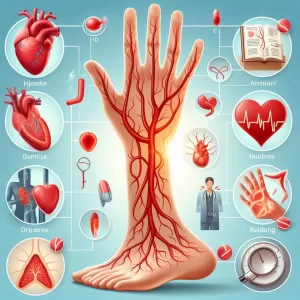Drug Therapy for Arrhythmia: Overview, Benefits, and Expected Results
Definition and Overview
Arrhythmia is a medical term that refers to the abnormal rhythm of the heart due to problems with the heart’s electrical conduction system. In most cases, the problem occurs when electrical signals are blocked or slowed or travel in a different or new pathway.
The normal heart rate is 60-100 beats per minute. Anything outside this range qualifies for an arrhythmia. It is called bradycardia if the heart beats abnormally slow and tachycardia if it beats too fast. Some patients also have uneven, irregular or skipping heartbeats.
Arrhythmia can affect anybody including healthy individuals who do not have a heart condition. While some cases are minor that they do not require treatment or management plan, some can be serious and even life-threatening. For this reason, it is important for patients with arrhythmia to be diagnosed as early as possible so medical intervention can be provided before the condition progresses.
Serious cases of arrhythmia are treated using different methods including electrical shock therapy, heart pacemaker implantation, cardiac ablation and drug therapy. Medicines that are used aim to prevent the occurrence of arrhythmia and stabilize the heart beat.
Who Should Undergo and Expected Results
As mentioned above, individuals with arrhythmia do not automatically require treatment. Unless the patient is showing serious symptoms or diagnostic tests suggest that he is at risk of developing a serious case of arrhythmia and complications, doctors typically employ the wait and see approach.
Symptoms that can indicate that treatment is necessary are:
- Angina
- Breathlessness
- Concentration problems
- Confusion
- Dizziness
- Difficulties when exercising
- Fatigue
- Fluttering in the chest
- Lightheadedness
- Sudden weakness
- Fainting
Palpitations
For patients who require treatment, drug therapy is one of the options and is recommended for patients with symptomatic tachycardias, atrial fibrillation and premature beats. A variety of antiarrhythmic drugs can be used and can be given through a vein (intravenous) or by mouth. Drugs listed below control the heart rate and restore a normal heart rhythm.Amiodarone
- Bepridil Hydrochloride
- Disopyramide
- Dofetilide
- Dronedarone
- Flecainide
- Ibutilide
- Lidocaine
- Procainamide
- Propafenone
- Propranolol
- Quinidine
- Sotalol
- Tocainide
Patients who are placed under drug therapy due to their arrhythmia can expect that their heart beat will stabilize and their symptoms significantly minimized.
How Does the Procedure Work
Patients who experience at least some of the symptoms listed above are strongly advised to seek medical attention. They can either consult their family doctor who can then refer them to a heart specialist or go ahead and directly consult a cardiologist.
As treatment method depends on the type of arrhythmia, certain diagnostic tests will be performed before drug therapy can be recommended. To diagnose arrhythmia and to understand its cause, the patient is expected to undergo the following exams:
Electrocardiogram (ECG or EKG) – This is a quick, painless diagnostic test that records the heart’s electrical activity. Commonly performed in the doctor’s office, it involves the use of small electrodes that are attached to the patient’s chest, arms and legs.
Holter monitor – In cases where the doctor wants to measure the patient’s heart rate for a longer period, a Holter monitor is used. This is a portable device taped to the skin for about 24-48 hours.
Event monitor – Patients who experience the above-mentioned symptoms less frequently may be asked to wear an event monitor for at least a month. Each time the patient notice symptoms, he will push the device button to record his heart’s electrical activity for a few minutes.
Stress test – This test aims to determine how much stress the patient’s heart can manage. While the patient is attached to the ECG or EKG machine, he will be asked to perform certain exercises such as walking on a treadmill or pedaling a stationary bike at different levels of difficulty. Throughout the test, the patient’s blood pressure and heart rate will be monitored and recorded.
The tests listed above can help the cardiologist determine the type of arrhythmia that the patient has. If tests results suggest the presence of bradycardias (slow heartbeats), the best treatment method is the surgical placement of a pacemaker that stimulates the heart to beat at a steady rate.
Drug therapy using any of the medications listed above is often recommended in treating fast heartbeats (tachycardias). It is crucial to take antiarrhythmic medication exactly as directed to prevent or minimize complications. Patients who are diagnosed with atrial fibrillation, a type of arrhythmia that is linked to heart failure and stroke, are prescribed with anticoagulant and antiplatelet drugs, which include blood thinners. It is important to keep in mind that available medications do not cure the arrhythmia but improve the symptoms. They work by keeping episodes from starting, slowing down the heart rate when an episode has started, or shorten the period that each episode lasts. Once the patient is placed on drug therapy for arrhythmia, he must take the drugs daily and indefinitely to effectively manage his condition.
Possible Complications and Risks
Antiarrhythmic drugs are linked to several side effects, particularly if they are not taken as directed by the physician. However, most of them can be addressed by changing the dose or the drug. Common side effects of antiarrhythmic medications include the following:
- Abnormally fast/slow heartbeat
- Allergic reaction
- Chest pain
- Blurred vision
- Dizziness
- Fainting
- Cough
- Metallic or bitter taste in the mouth
- Increased sensitivity to sunlight
- Loss of appetite
Constipation or diarrhea
Reference:Olgin SE. Approach to the patient with suspected arrhythmia. In: Goldman L, Schafer AI, eds. Goldman’s Cecil Medicine. 24th ed. Philadelphia, PA: Elsevier Saunders; 2011:chap 62.
/trp_language]
## Drug Therapy for Arrhythmia: Overview, Benefits, and Expected Results
**Understanding Arrhythmia**
Arrhythmia, also known as an irregular heartbeat, is a disorder that affects the electrical rhythm of the heart. It can cause the heart to beat too fast, too slow, or irregularly. Arrhythmias can range from harmless to life-threatening.
**Drug Therapy for Arrhythmia**
Drug therapy is a common treatment for arrhythmias. Antiarrhythmic drugs work by regulating the heart’s electrical activity, helping to correct the irregular heartbeat. There are several types of antiarrhythmic drugs, each with its own specific mechanism of action.
**Benefits of Drug Therapy**
* **Control Symptoms:** Antiarrhythmic drugs can effectively suppress arrhythmias and alleviate associated symptoms, such as palpitations, fainting, and chest pain.
* **Improved Quality of Life:** By controlling arrhythmias, drug therapy can significantly improve the patient’s overall quality of life.
* **Reduced Risk of Complications:** Certain arrhythmias can increase the risk of blood clots and stroke. Drug therapy can help reduce these risks.
**Expected Results**
The expected results of drug therapy for arrhythmias vary depending on the individual patient and the type of arrhythmia. Generally, patients can expect:
* **Symptom Relief:** Most patients will experience a reduction or complete elimination of their arrhythmia symptoms.
* **Improved Heart Function:** Drug therapy can restore normal heart function, reducing the risk of complications.
* **Avoidance of Invasive Procedures:** In some cases, drug therapy can help patients avoid more invasive treatments, such as ablation or pacemaker implantation.
**Choosing the Right Medication**
The choice of antiarrhythmic drug depends on several factors, including the type of arrhythmia, the patient’s overall health, and other medications they are taking. A cardiologist will carefully evaluate the patient and determine the most appropriate course of treatment.
**Monitoring and Follow-Up**
Patients taking antiarrhythmic drugs require regular monitoring to ensure the effectiveness of treatment and detect any potential side effects. Follow-up appointments usually involve electrocardiograms (ECGs) and physical examinations.
**Conclusion**
Drug therapy plays a crucial role in managing arrhythmias. By regulating the heart’s electrical activity, antiarrhythmic drugs can effectively control symptoms, improve heart function, and reduce the risk of complications. Careful selection of medication and regular monitoring are essential for achieving optimal outcomes.
One comment
Leave a Reply
Popular Articles








Set Title: Drug Therapy for Arrhythmia: An Overview of Benefits and Expected Results